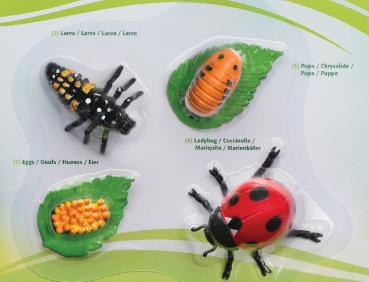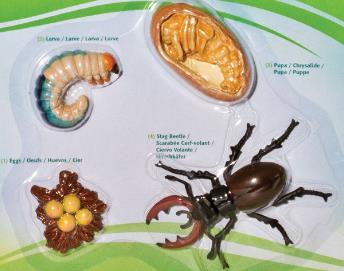|
|
Third Grade Integrated NGSS |
||||
OBJECTIVE
·
Comparing beetles with true bugs.
·
Observing stages of ladybeetles VOCABULARY:
·
Elytra
·
Forewings
·
Hindwings MATERIALS:
·
Life
cycle models of ladybeetles and stag beetles · Plastic models of · https://www.youtube.com/watch?v=aCWk8nYGfyg&feature=youtu.be · Powerpoint beetles vs. truebugs BACKGROUND:
The main distinguishing characteristic of the Coleoptera (sheath-winged)
is the
PROCEDURE:
Eggs:
Ladybug eggs are pale yellow and very small. The mother ladybug
lays them on the underside of a leaf for protection.
As many as 300 ladybug eggs are produced at a single time.
They usually hatch in 3-5 days.
Larva:
Once hatched, a ladybug egg becomes a larva.
This baby ladybug has a long body with six legs.
The larva eats aphids and grows for about 3 weeks until it turns
into a pupa.
Adult:
Adult ladybugs develop
bright colors soon after their pupa stage.
Ladybugs live from 3-9 months, sleep through the winter and awake
in spring.
Life Cycle of Stag Beetle
Eggs: Female
stag beetles carefully prepare the ground by digging into the soil before
laying 30-90 eggs near rotting wood, which will provide food once the eggs
hatch. It can take about
three weeks for the eggs to hatch.
Larva:
Stag beetle larvae break from their eggs by cutting the shell.
They are C shaped and feed on rotting logs near where they hatch.
It takes about two to seven years for them to mature, during which
time they feed on decaying wood and grow larger.
Pupa:
Once a larva reaches its full size of 3 inches long it prepares a
safe spot deep in the ground for a cocoon.
In the cocoon it undergoes metamorphosis.
It may leave its cocoon, but it will stay underground until spring
before emerging as an adult stag beetle.
Adult:
After emerging from the ground, adult stag beetles begin seeking a
mate since they only live for a few months.
Adult male stag beetles are known for their large, impressive jaws,
which are used for wrestling other stag beetles over food or territory.
Female stag beetles spend mos their time search for a nesting site.
6. If you have time, you may want to
concentration on the Ladybeetle or Ladybug -
Across North America ladybeetle species composition is changing.
Over the past twenty years native ladybugs that were once very
common have become extremely rare.
During this same time ladybugs from other parts of the world have
greatly increased both their numbers and range. This is happening very
quickly and we don’t know how, or why, or what impact it will have on
ladybug diversity or the role that ladybugs play in keeping plant-feeding
insect populations low. We're
asking you to join us in finding out where all the ladybugs have gone so
we can try to prevent more native species from becoming so rare.
https://www.youtube.com/watch?v=aCWk8nYGfyg&feature=youtu.be
Ladybug, ladybug, ladybu-u-ug
Let's go find a ladybug
Ladybug, ladybug, ladybu-u-ug
Ladybugs have two sets of wings
Ladybugs have important jobs
Ladybug, ladybug, ladybu-u-ug
|
|||||


